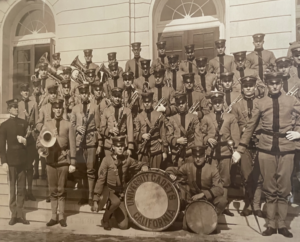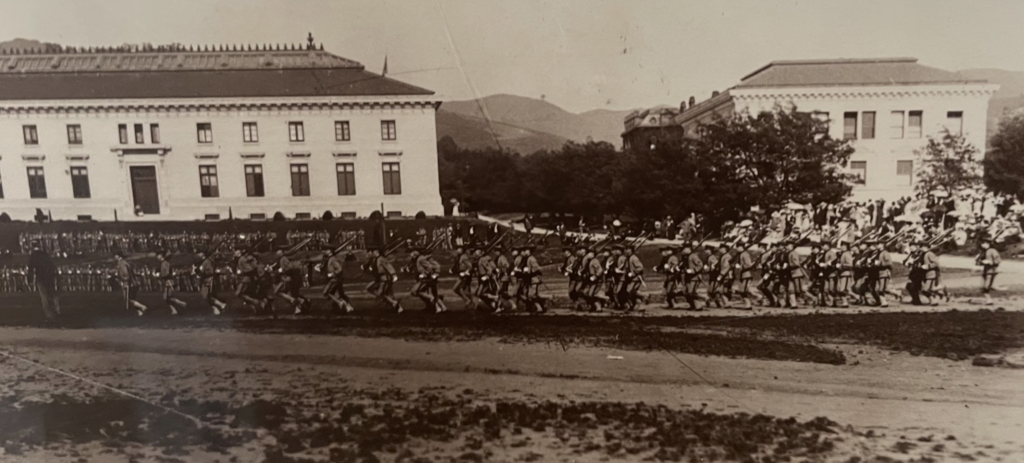Origins Of the ARMY ROTC Program
The origins of the Army ROTC program may be traced to the early 19th Century. In 1819, through the efforts of Captain Alden Partridge, the American Literary, Scientific, and Military Academy – known today as Norwich University – was founded. It was there that training in military tactics was first offered as a component of the curriculum of civilian college in America. Under this concept, college educated men would receive a strong foundation in military tactics. During times of national crisis, these “citizen- soldiers” would be available for service in the militia. The Morrill Act of 1862 spurred additional availability of military training on American college campuses. Enacted during the Civil War, the Morrill Act provided federal lands to state-supported colleges, provided that training in military tactics was available.

The Army ROTC program, as we know it today, came into being with the passage of the National Defense Act of 1916. Many fine academic institutions, including the University of California, Berkeley and Norwich University were part of this initial cohort. This represented the first time that the military instruction on America’s college campuses was brought under single, federally controlled program. A total of approximately 50,000 men who had received some form of military instruction on college campus, ultimately were to serve during the First World War. During school year 1919-1920, the Army ROTC program produced its first group of lieutenants. These 133 new officers were to be joined by more than 500,000 others by 1985.
During the Second World War 150,000 ROTC – trained officers played an integral role in the defeat of the Axis powers. 18,000 officers who got their start in the Army ROTC program also answered the call to arms during the Korean Conflict. By the height of the Cold War, Army ROTC had proven itself as one of the nation’s principal sources of top quality leaders. This led to the passage of the ROTC Vitalization Act of 1964. One key provision of that legislation formed the basis for the very popular Army ROTC scholarship program. Throughout the Vietnam Conflict, Army ROTC-trained officers served at every level of command in our Army.

In 1972, previous restrictions that prohibited full participation by women in the Army ROTC were lifted. But perhaps the most significant change to the Army ROTC program since its inception in 1916 was to occur in 1986. In April of that year, U.S. Army Cadet Command was established. Its initial Commander, Major General Robert E. Wagner, himself a graduate of the Army ROTC program at Virginia Military Institute, set about to reinvigorate the program and bring enhanced rigor into the training and leadership evaluation process.
In 2006, Cadet Command celebrated the 20th anniversary of its founding. Since being establish as a major subordinate command of U.S. Army Training and Doctrine Command (TRADOC), Cadet Command has produced more than 100,000 lieutenants for America’s Army. Graduates of the ROTC program currently comprise more than 50% of the General Officers on Active Duty in the Army. Countless senior leaders in the corporate sector and in government proudly note that the Army ROTC program gave them the leadership and managerial skills that have allowed them to flourish in their civilian careers.
